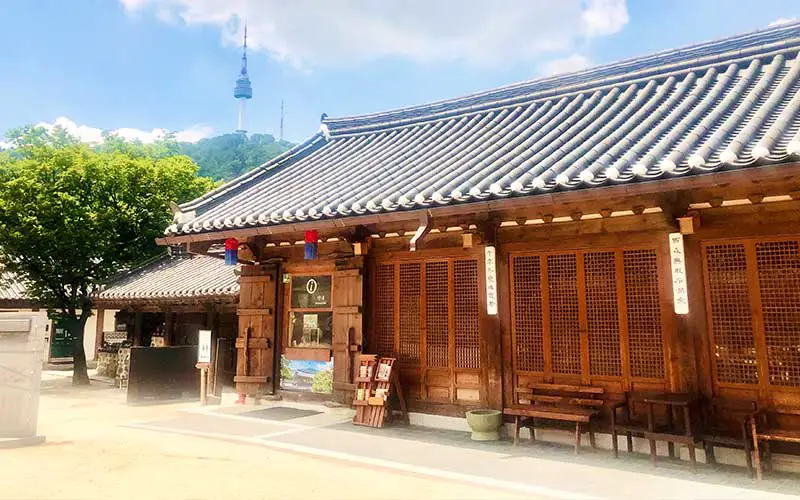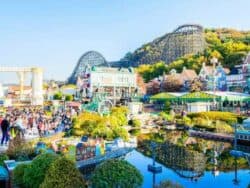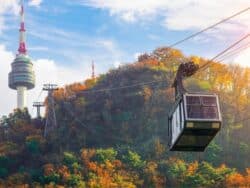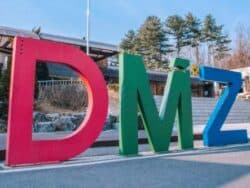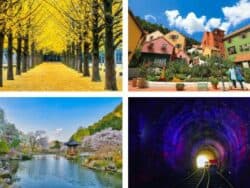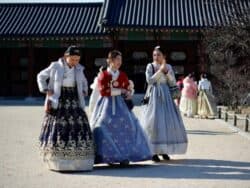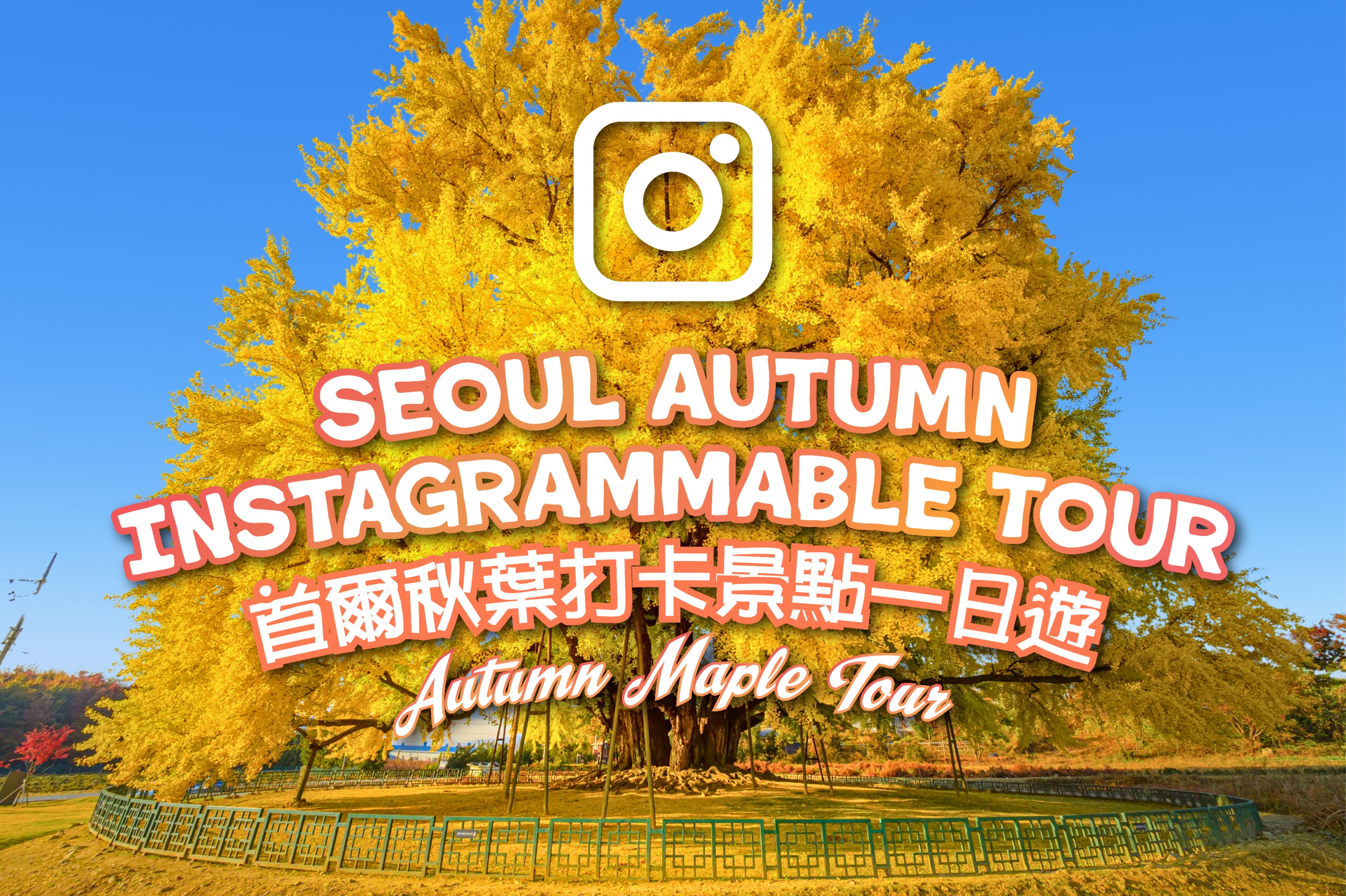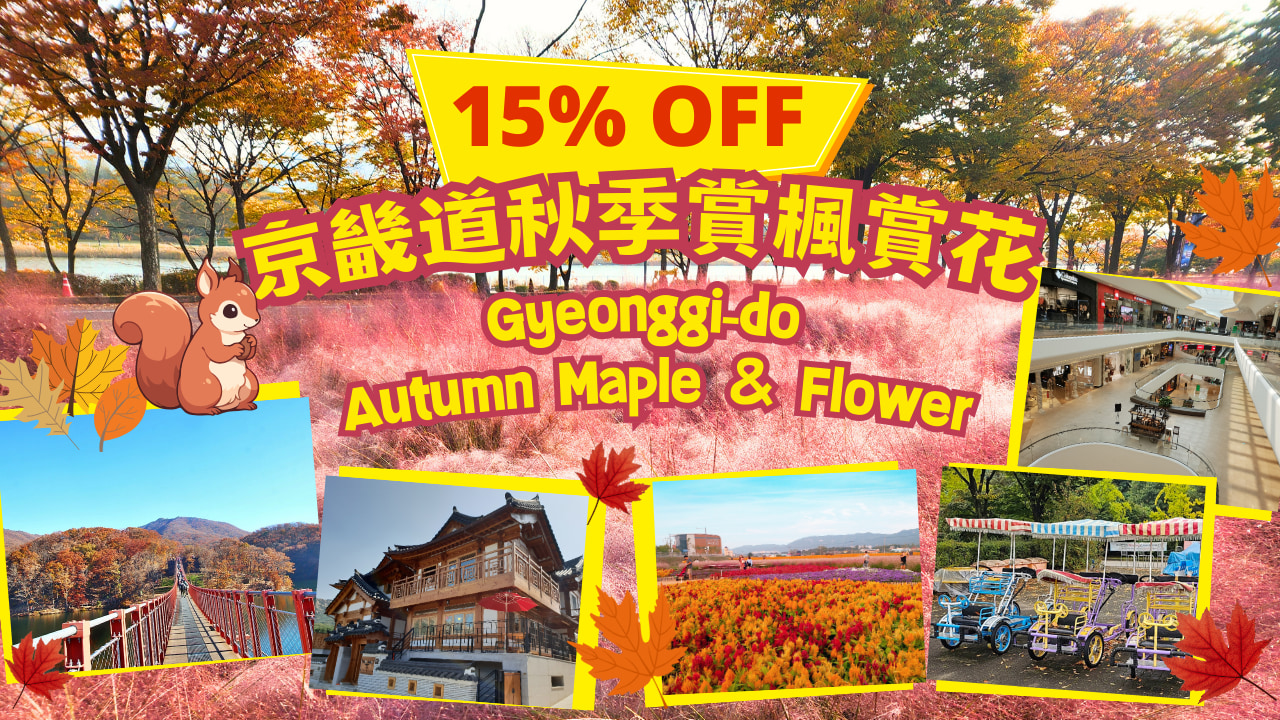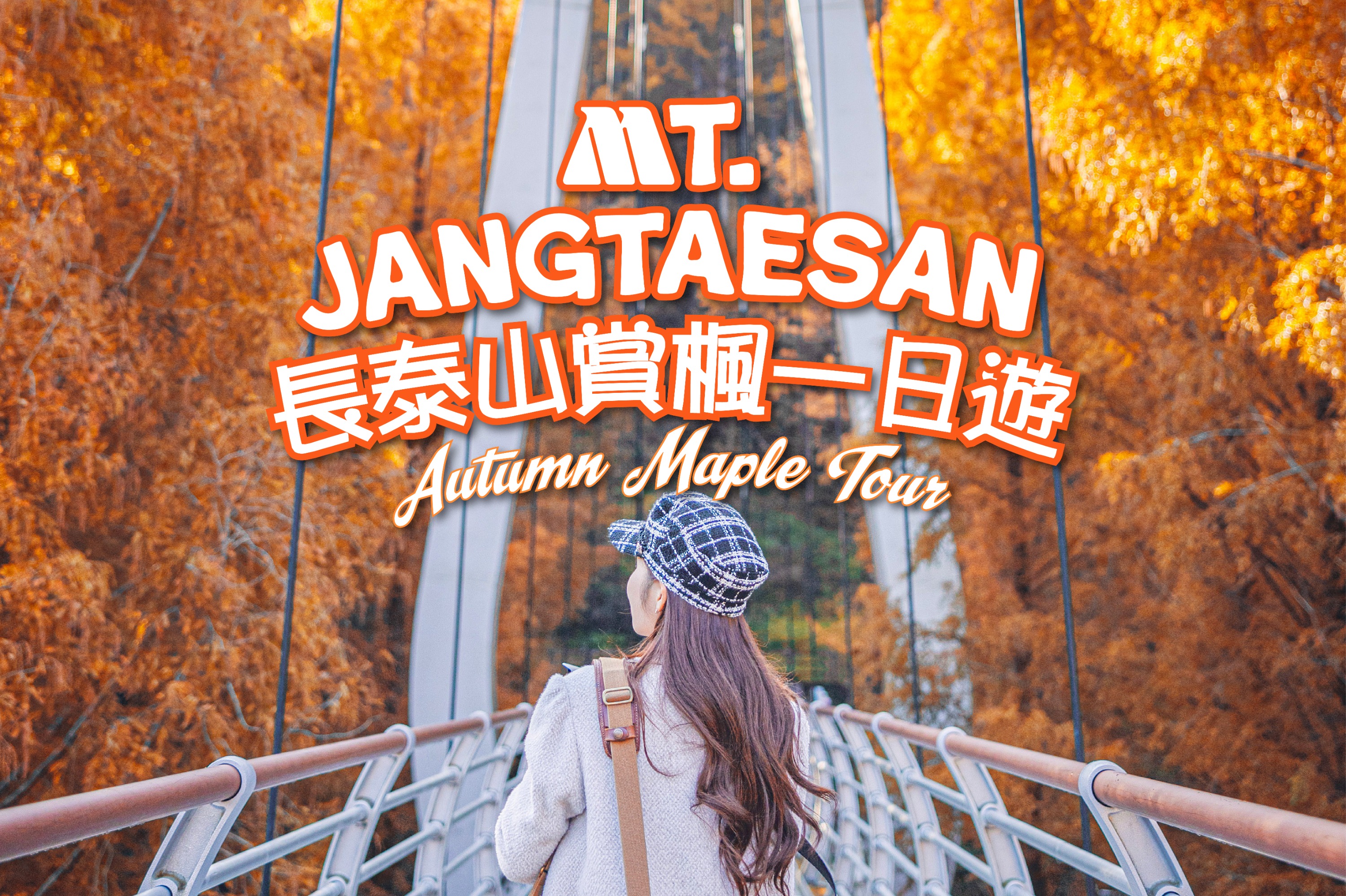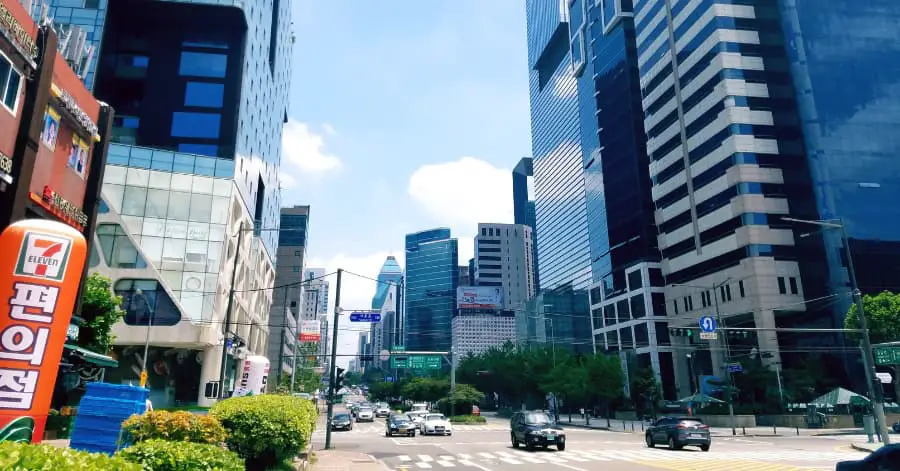Hanok is an essential part of the Korean tradition. It is a house that was first designed during the Joseon Dynasty in the 14th century. The idea of Hanok houses was developed in Manchuria and Korean Peninsula. A great thought is given to the seasons and land in the rules of Korean architecture. This rule is known as Baesanimsu which translates to “surrounded me”. According to this principle, the ideal Hanok must be built with a river in its front and a mountain in its back.
Moreover, the Hanok is found in different shapes which differ from region to region. For instance, in the northern areas which have colder seasons, the shape of the Hanok is square and consists of a courtyard in the middle of it. So that heat could be efficiently retained. Meanwhile, the Hanoks in central Korea are shaped like the English alphabet “L”. Discover more about this beautiful Korean traditional house and experience Hanok Stay in Seoul!
Traditional Korean House, Hanok
Brief History of Hanoks – Origin, and Development
People of the Korean Peninsula used to live in caves or other forms of temporary houses. In the next era, this transformed into dugout huts where they use to dig the ground with shovels and built small houses with the help of columns and rafters made out of wood. Originally, the use of trees and grass constructed a Hanok. Later in the Bronze Age, the area covered by the Hanoks started to expand as the number of columns increased. However, in the Iron Age, the people had learned to lay a roof. This took a step in the direction of what a traditional Hanok looks like now.
The use of Hanoks started during the era of the Joseon Dynasty. And the word “Hanok” was first defined in 1975 as a house built in a way not influenced by the ways of the west. During the era of the Joseon Dynasty, Confucianism played a huge role in the design of residences. Furthermore, the regions and their social class greatly influenced the shape of the Hanoks along with the raw materials used in their built. These houses had started using Giwa and Ondol which are a form of tiles made from baked soil for roofing and flooring, respectively.
Now, these Hanok stays are considered more environmentally friendly houses and even some train stations in Korea are also inspired by their design.
Characteristics of a Hanok
Discover the unique things of Korean traditional house, Hanok.
Design and Structure
Hanok is designed in such a manner that they preserved coolness inside them during the summers and the heat during the winter. If you have traveled Korea in the winter season, you might hear about Ondol that is a kind of traditional Korean flooring heating system. Even though it’s developed in iron age in Korea, it’s still used as it promotes an effective heating system in the Hanok. In modern usage, it refers to any type of underfloor heating, or to a hotel or a sleeping room in Korean style.
In addition, the Daecheong style is also used in Hanoks in the southern regions as it blocks sunlight and also is able to protect its inhabitants in the hottest of summer. The Daecheong style includes using cool wood to install flooring in a hall. Moreover, the best part about the Hanok design is that its Daedulbo. They are not fitted into the ground but are inserted in the cornerstones which helps in keeping it safe in case of earthquakes.
The Raw Materials
First, the raw materials used in the building of a Hanok are to be recyclable and completely natural. Thus, it does not cause or promote any pollutions. These materials include timber, stones, soil, and rock, etc. Second, the roofing of modern Hanoks is made from tiles that are either prepared using the methods of Ondol and Giwa. Third, the edge of the curvy roofs is from Cheoma which translates to eaves. The length of it can be adjusted depending on how much light you prefer should enter into the house. Lastly, the building of a Hanok is incomplete without the use of Hanji which is a traditional paper in Korea. It used indoors and windows after it has been made waterproof with bean oil. This little detail makes these Hanoks breathable and looks incredibly beautiful.
Regional Personal Touch
As you have read earlier, the design of the hanok stay differs on a regional basis. In South Korea, the hanoks are built in a straight line while in the north they are shaped like a square. In the south, they keep the straight shape because they want good air circulation so, they also make the hanoks with wooden floors and a lot of windows. The hanoks in the north have a square shape because they want to block the air as the north is a colder region due to which their rooms are also joined together. However, in central Korea, the shape of Hanoks is a mixture of both south and north regions with the shape like an “L”.
Social Class Effect
The structure and design of Hanok also differ based on the social class they owners belong to. You will find the diversity of the Hanoks of the upper class known as Yangban and the middle class known as Jungin. The difference between the structure of these Hanoks lies in the functionality of it, along with the use of Giwa, and the aesthetics of them.
Do Hanoks still exist?
Yes, Hanoks still exist in Korean traditional form and have been preserved in various areas of Korea. There is a Namsangol Hanok Village in the Pil-dong area of Jung-gu, Seoul where is in the middle of the city center near Myeongdong. And Jeonju Hanok Village consists of over 800 Hanoks. Also, you can find hanok houses in the Korean Folk Village which is a huge tourist attraction in Yongin, Gyeonggi.
In addition, Bukcohon Hanok Village is the one of the popular Seoul attractions which is a residential area. Other than this, a lot of the Hanoks in Gye-dong and Gahoe-dong in Seoul have been transformed into attractive restaurants, cafes, and teahouses. If you want to experience more authentic Hanok village in nature surrounded, you can visit South part of Korea. The Hahoe Folk Village, and the Yangdong Folk Village are perfect places both of which are situated in Gyeongsangbuk-do.
Where to stay in Seoul, Korea?
If you are here in Seoul then Hanok stay is one of the must-try to experience the real Korean culture. You will get to live in a very Zen and humble environment and will also be able to use the traditional toilets, experience the traditional Korean cuisine, and enjoy a simple lifestyle. You can have this experience not only in Seoul but, in the other parts of Korea as well. The following is where you can enjoy living in a Hanok when in Korea and have the best experience.
Seoul Hanok Stay
- Sky Guesthouse: It is located in Bukchon and is more like a ritzy version of a traditional Hanok with authentic architectural details. The place is extremely beautiful, welcoming, and homey with its timber floors and frames, and professional staff. For more information, click HERE.
- Bukchonae: Rustic and fairytale are two words to describe it. Moreover, it contains all the necessities you would require including a private bathroom. It is also very near to the Jogyesa Temple. So near, that you can towards it without breaking a breath. Head HERE for details.
- Stay256 Guesthouse: The Hanok here is strictly based on the traditional principles, such as small rooms, structure, design, and overall aesthetic. Check more detail HERE.
- Cheong Yeon Jae Hanok: The design and structure are authentic and true to its ancient principles yet; it is very comfortable and well-equipped with all the required items and amenities. Hanji, Ondol, Giwa, etc. are the raw materials for the main construction of this Hanok. Book it HERE.
Jeonju Hanok Stay
- Samlockon Guesthouse: It is beautiful with its wooden exterior and extremely detailed design. The best part is that it is located near all the tourist attractions. See the photos and reviews HERE.
- Ginkgo Tree Guesthouse: You can find this Hanok in a secluded environment with a huge Ginko tree. Not only it has spacious rooms and but there also are all the things you might need. The place definitely takes you back in the olden times without making you uncomfortable in any way. Click HERE for more information.
Gyeongju Hanok Stay
- Yettle Hanok Stay: It’s such a perfect balance by mixing traditional design and modern furniture and fittings. The comfort of their guests is of utmost importance which is why they provide them with private bathrooms. However, you can choose to either leisure around in the common area or have a private area for yourself. Head HERE for details.
- Siwoowadang: This wonderful Korean traditional house in nature is a perfect place to relax and its setting is also very comfortable and personal. The design is traditional but still, it is well-equipped with all the necessary amenities. Check HERE.
Andong Hanok Stay
- Hahoe Maeul Bukchondaek : You can find the place at the center of the city which means that you will be able to access any part of it with ease. Like all the other Hanoks existing in this area, they also have all the necessary facilities, such as the wifi, free parking, food, and drinks, etc. The rooms are small but, comfortable, nonetheless, you might have to share the bathroom and the shower depending on your booking. See more HERE.
The Korean traditional house, Hanok is a great place to appreciate the simpler aspects of life while learning to disconnect in order to connect.
You may also like
- Local Cultural Experiences & Classes in Seoul
- 10 Free Seoul Walking Tours with Local Volunteer Guides
- Best Things to Do in Busan
- Must-visit Place to Visit in Jeonju
- Beautiful Places to Visit near Seoul – Nami Island
- Top Parks in Seoul for Chilling : from Hangang Park to Yongsan Family Park
IVK’s Top Picks – Day Tours, Tickets, and Travel Activities
Seasonal Picks!😍


